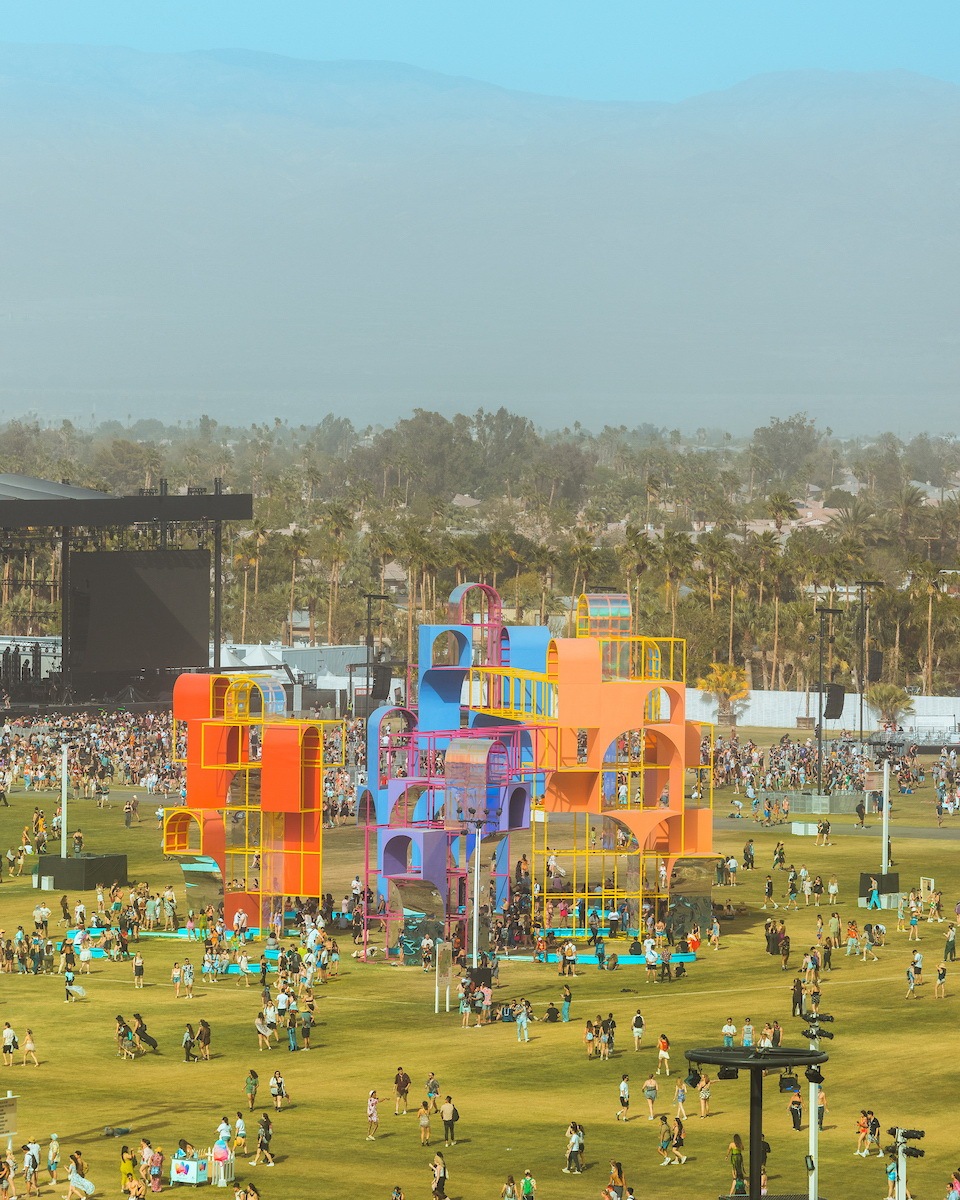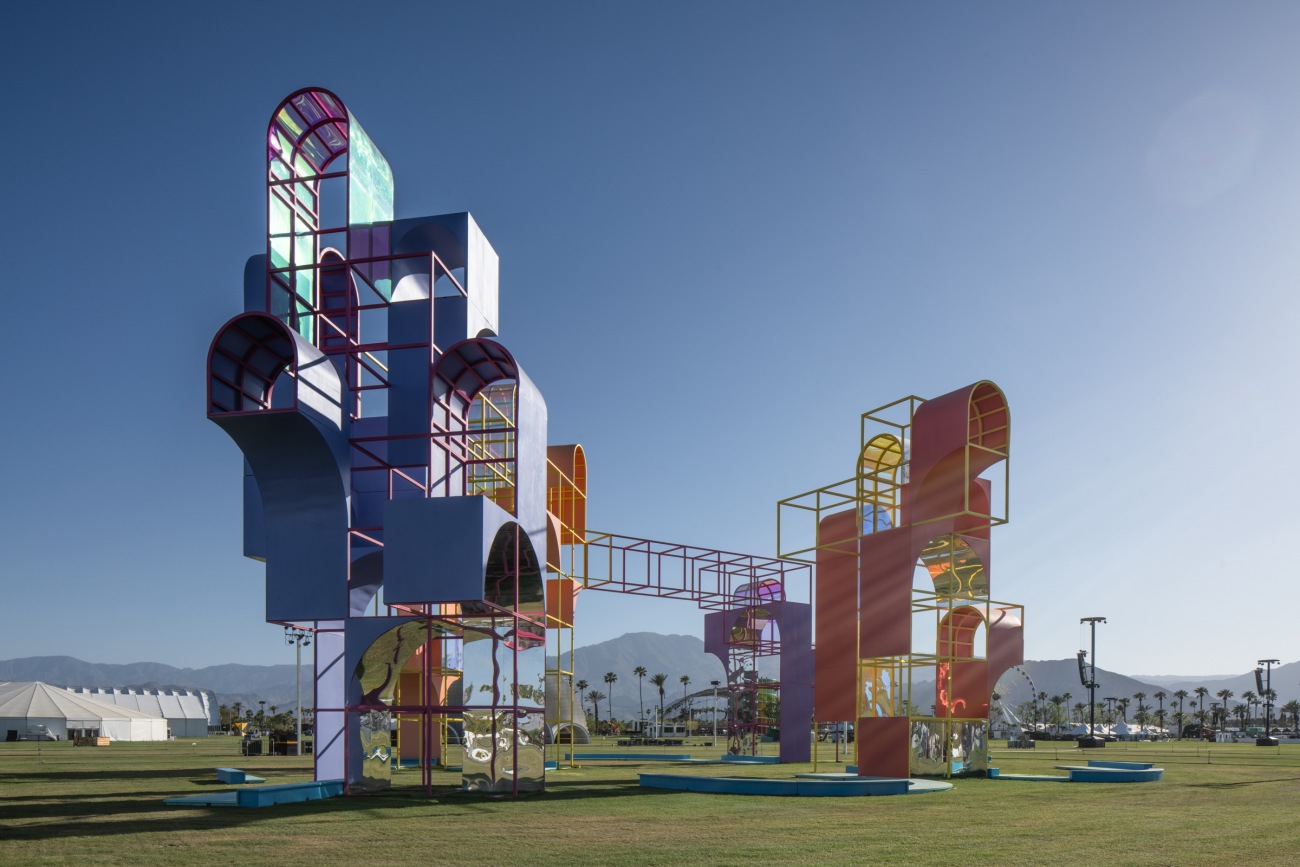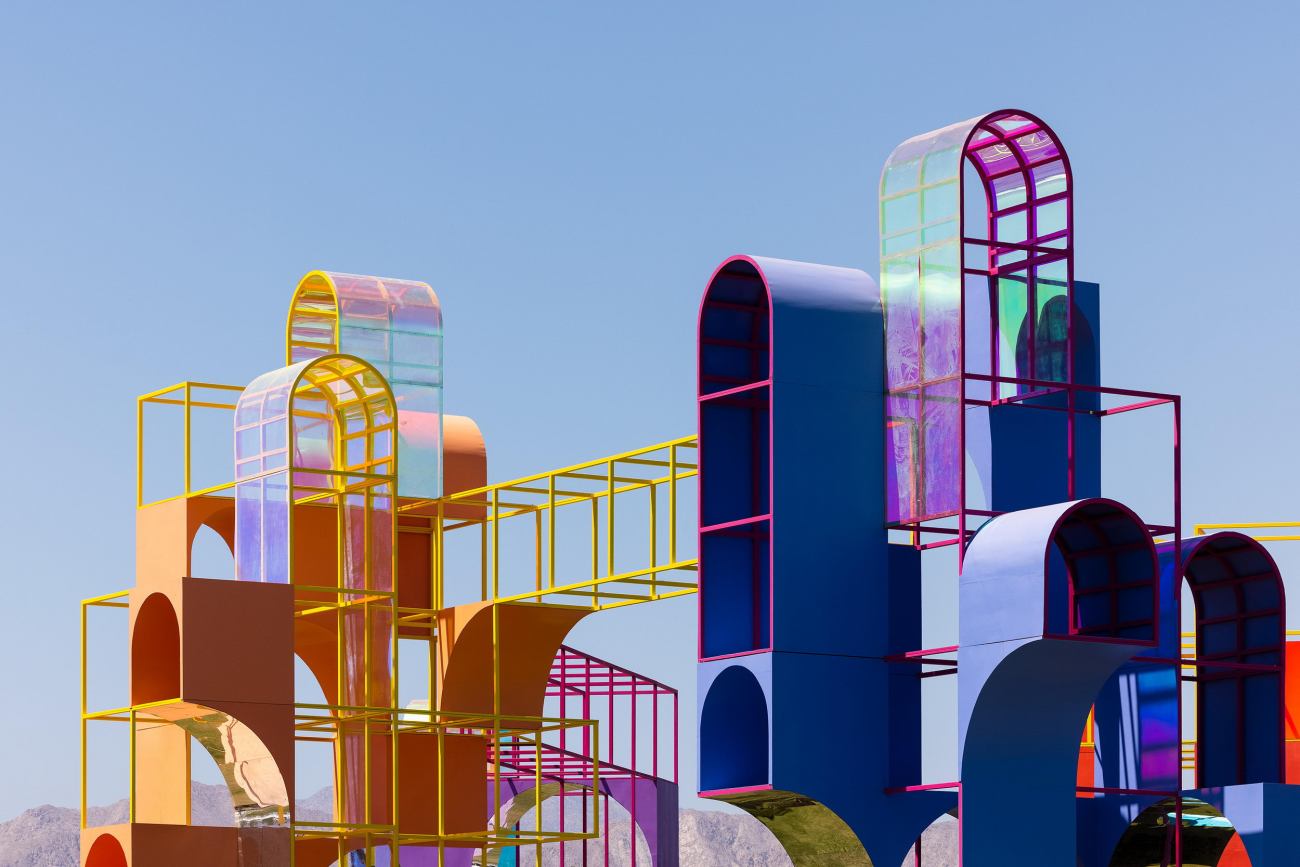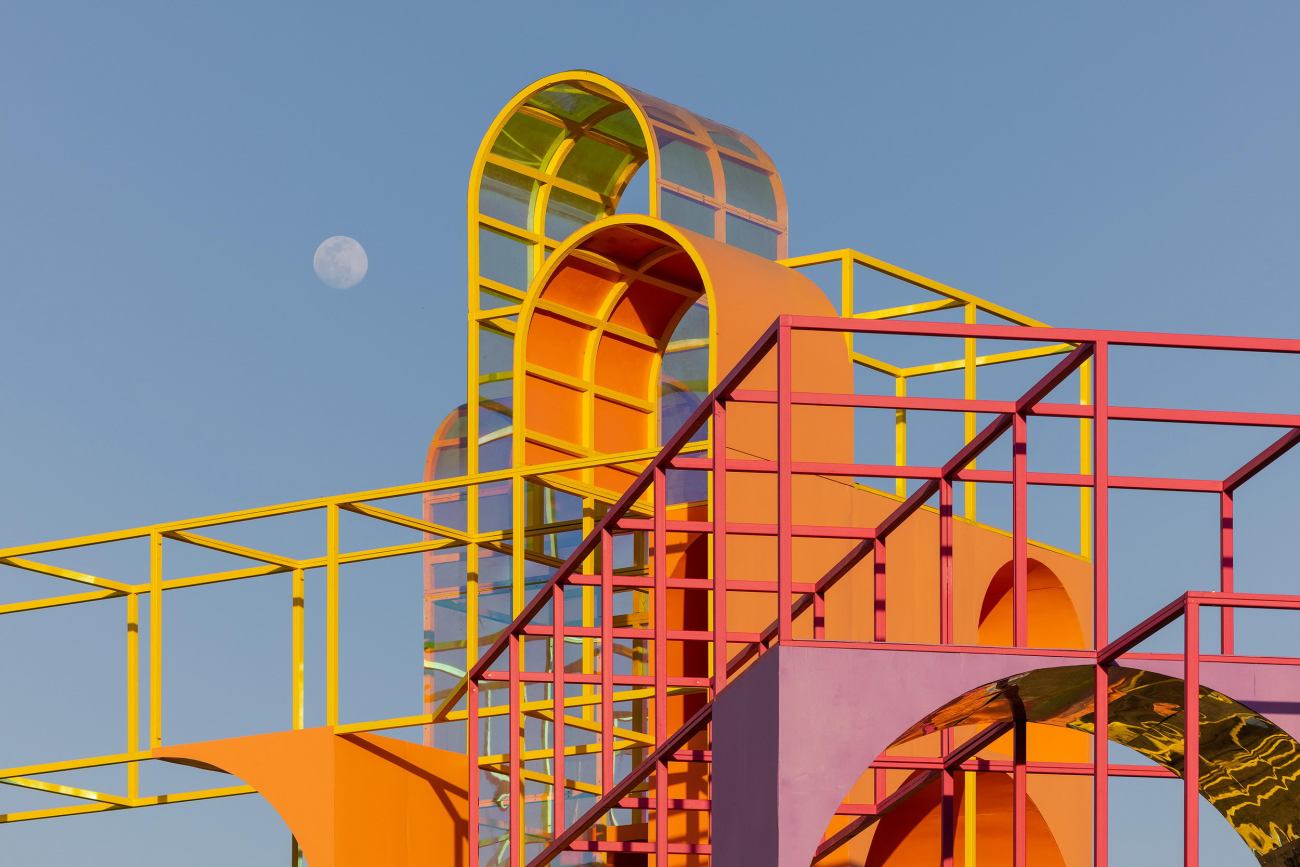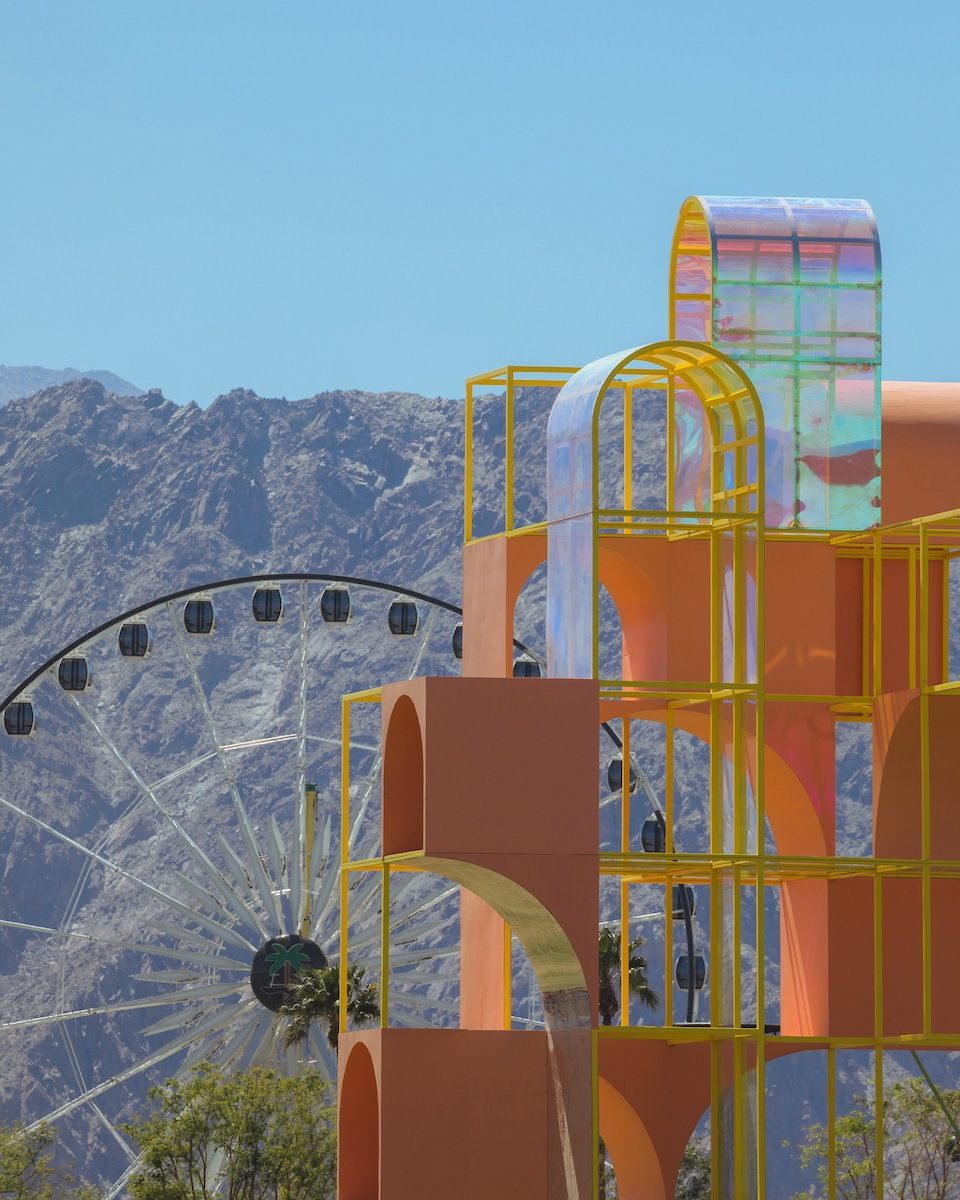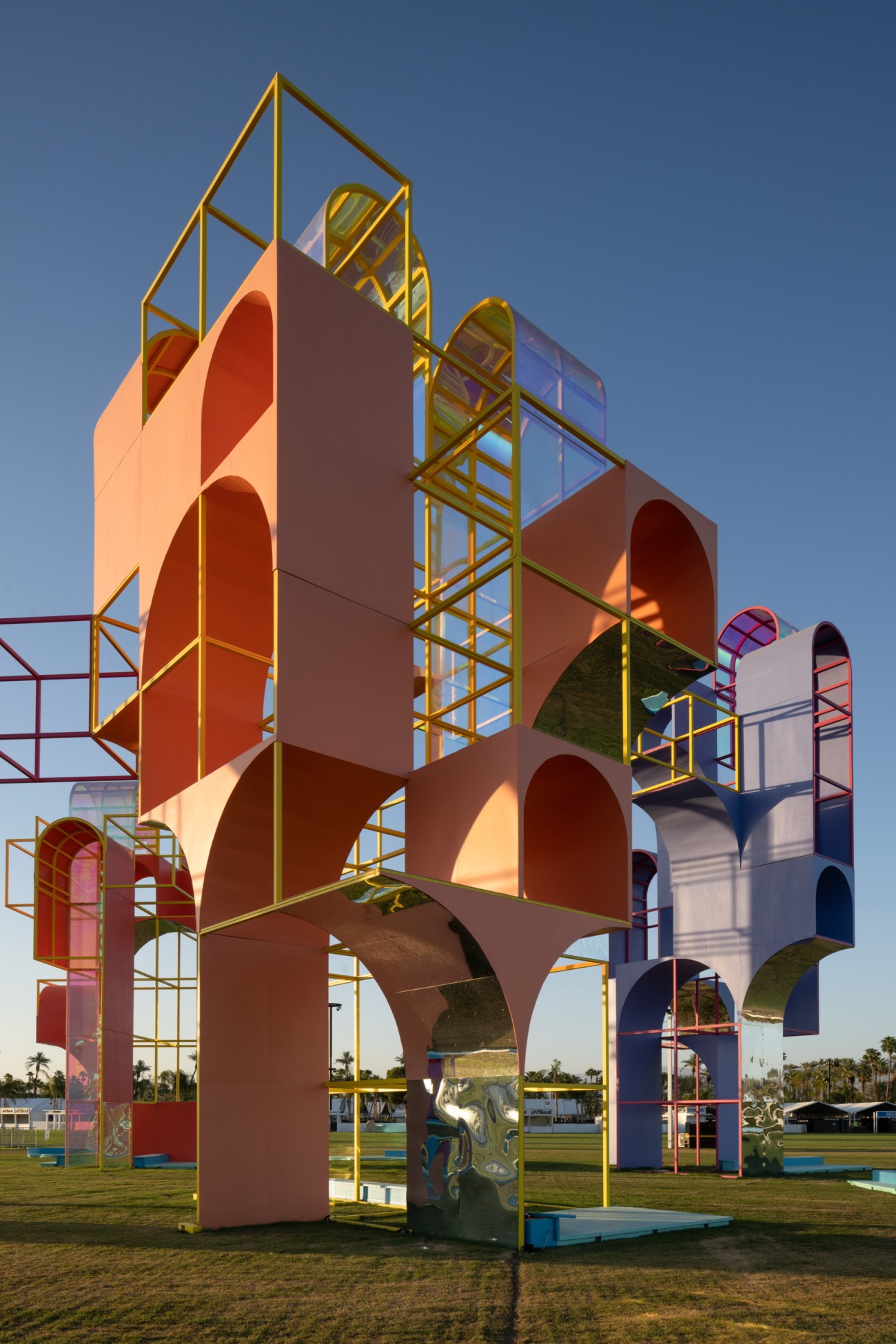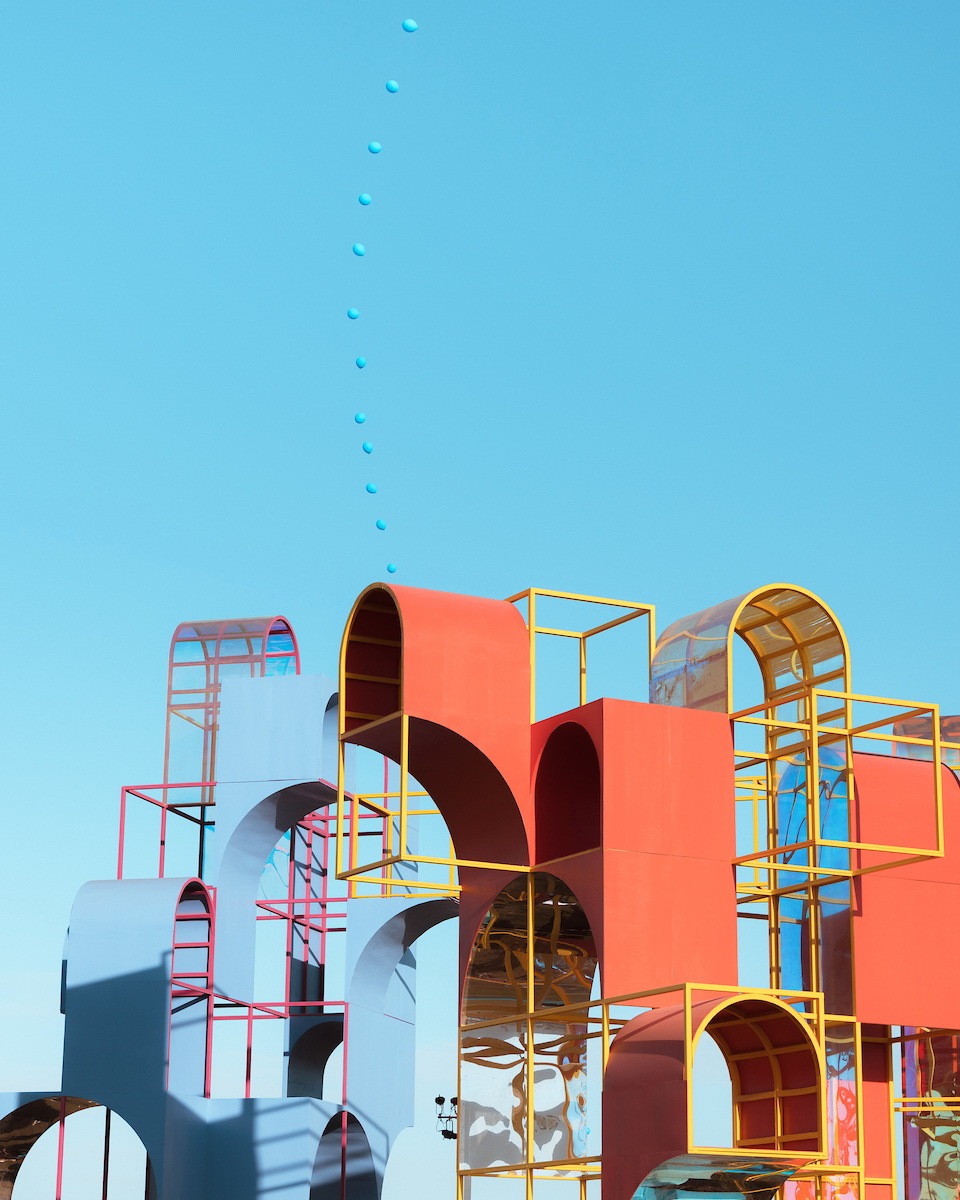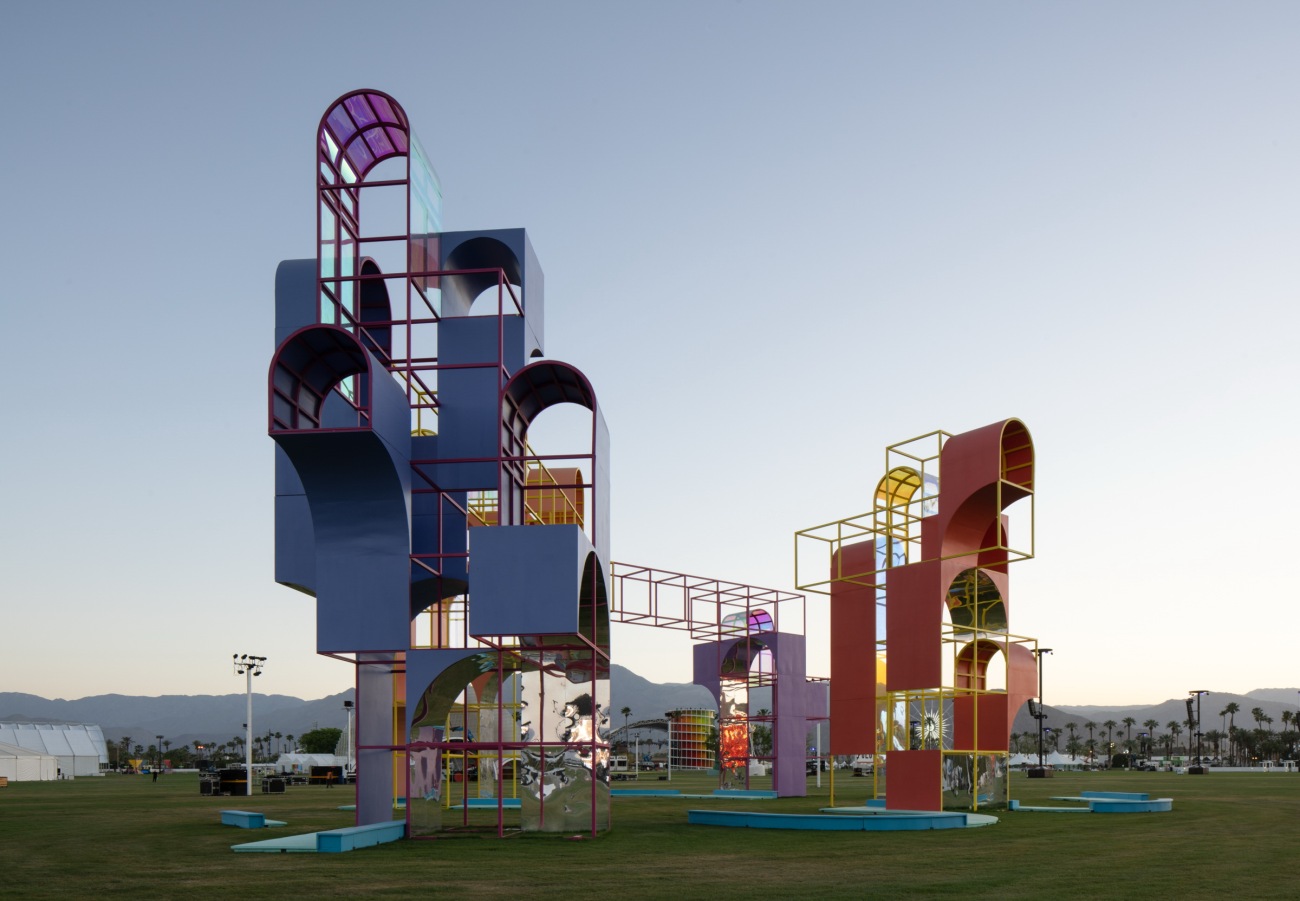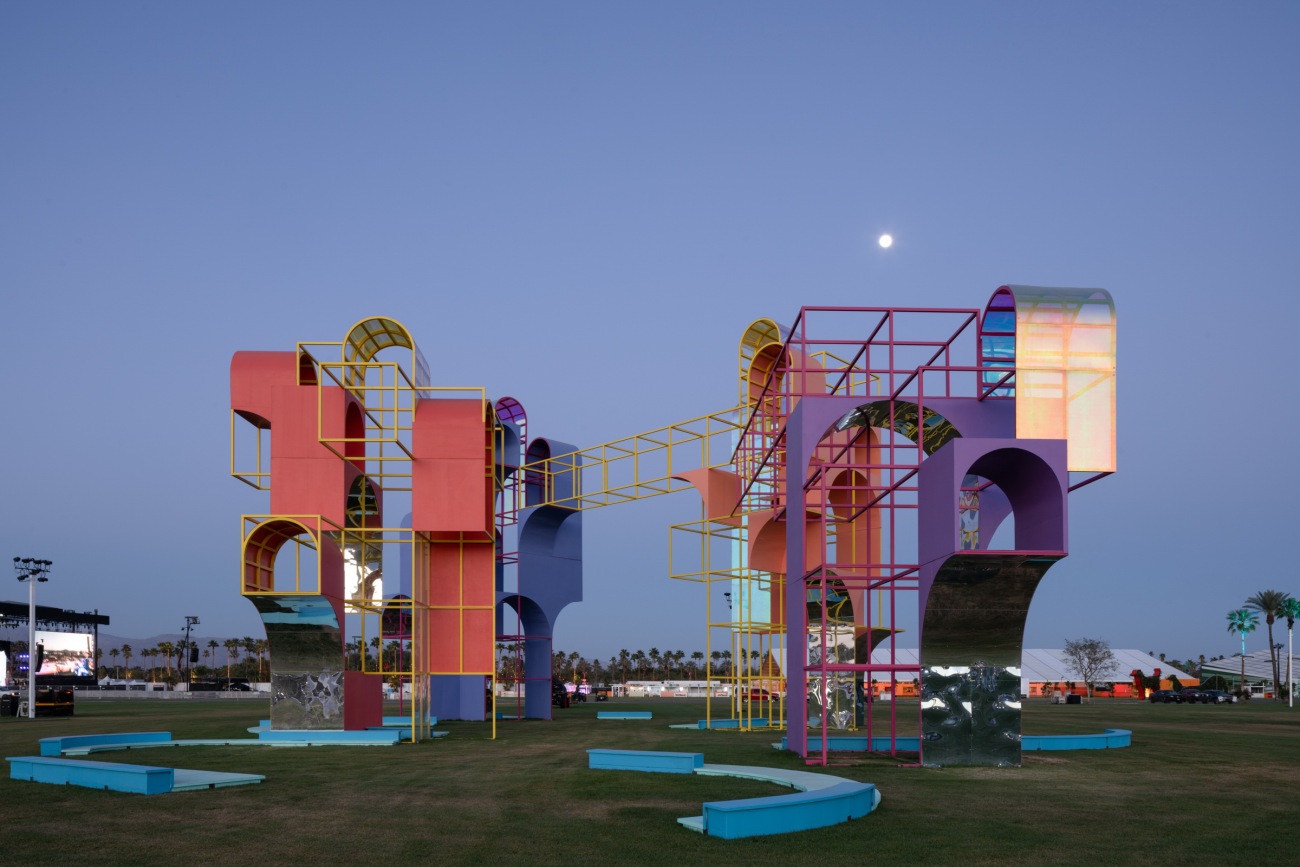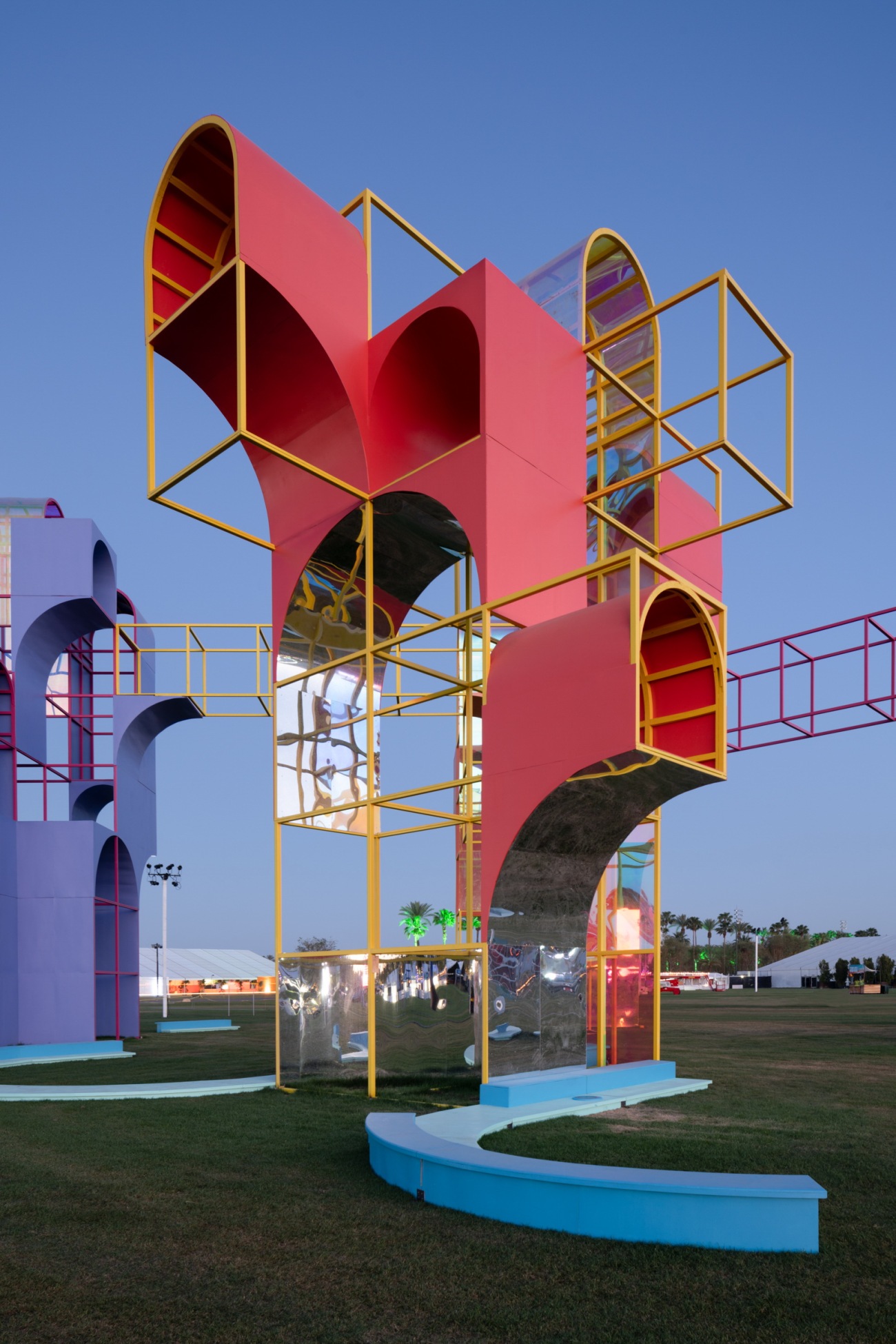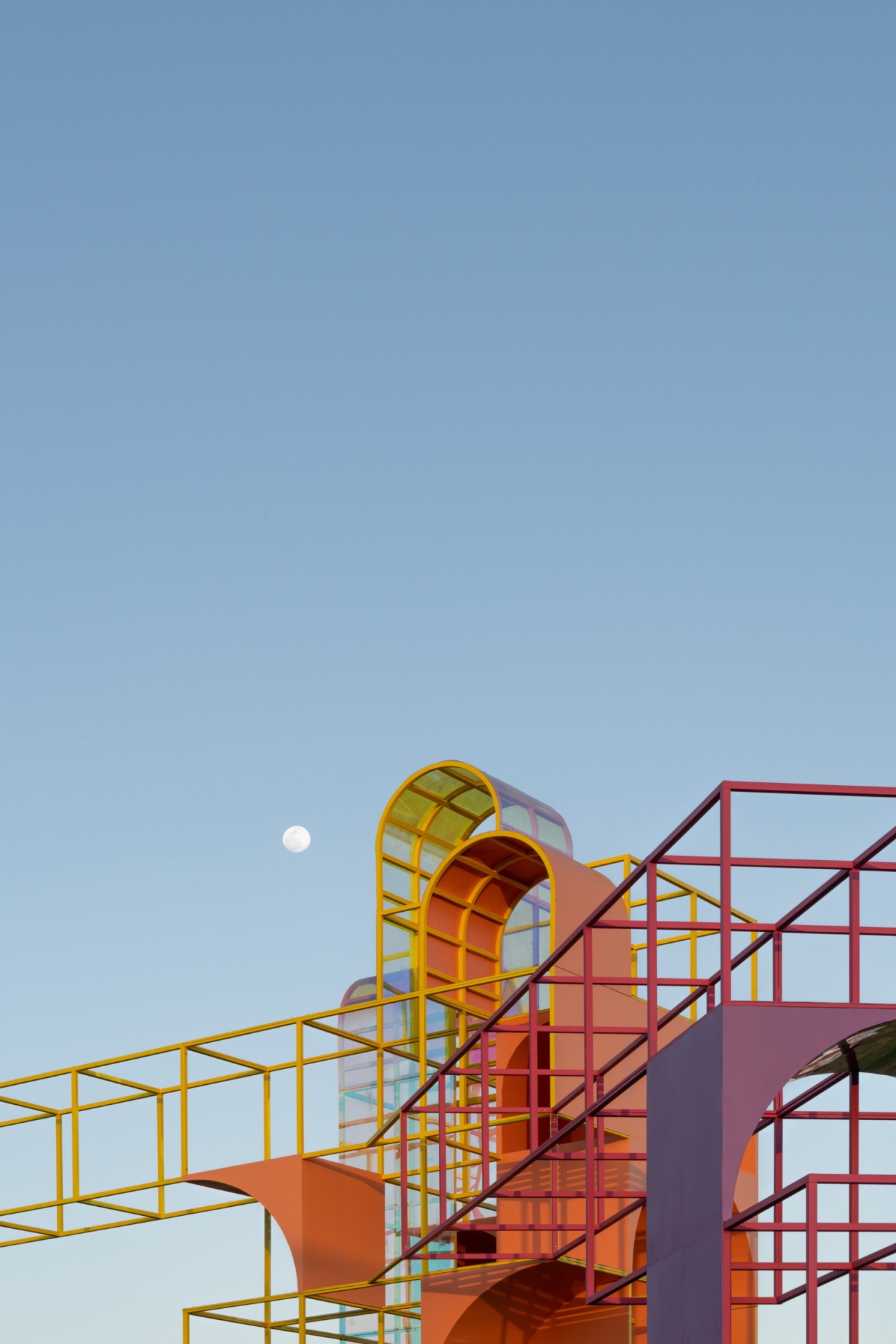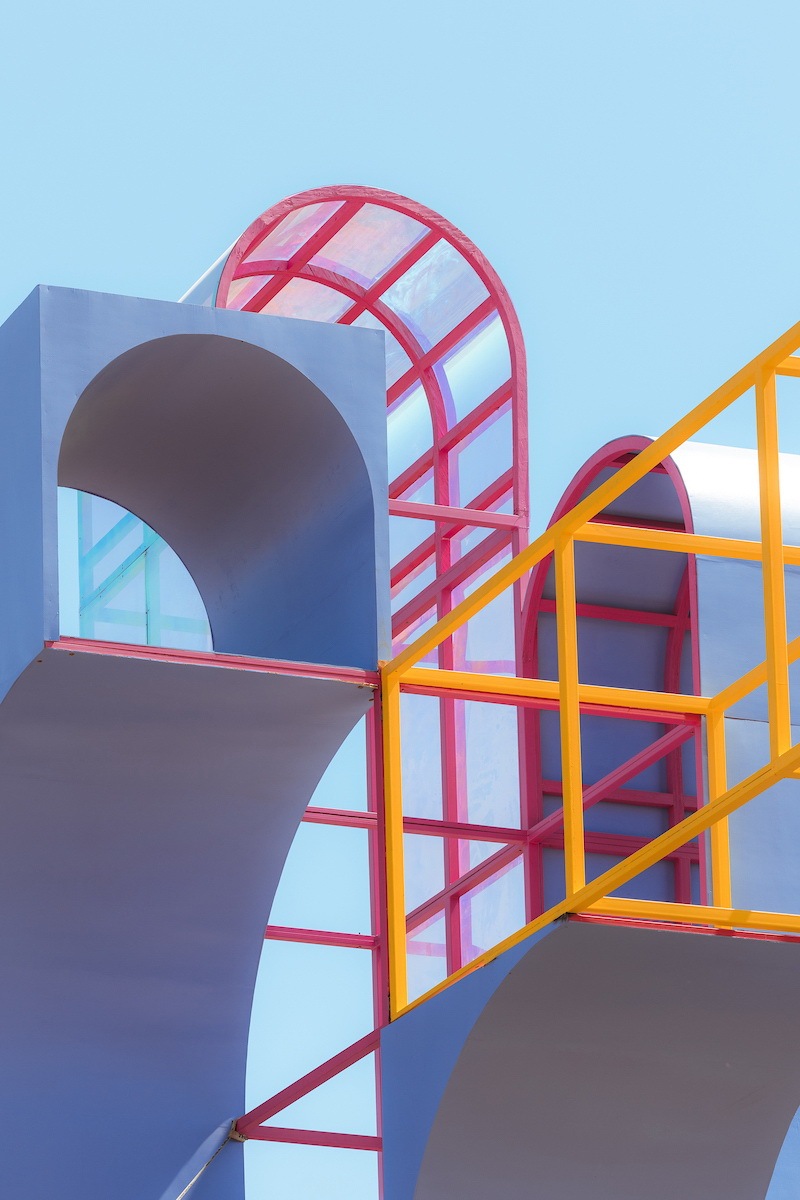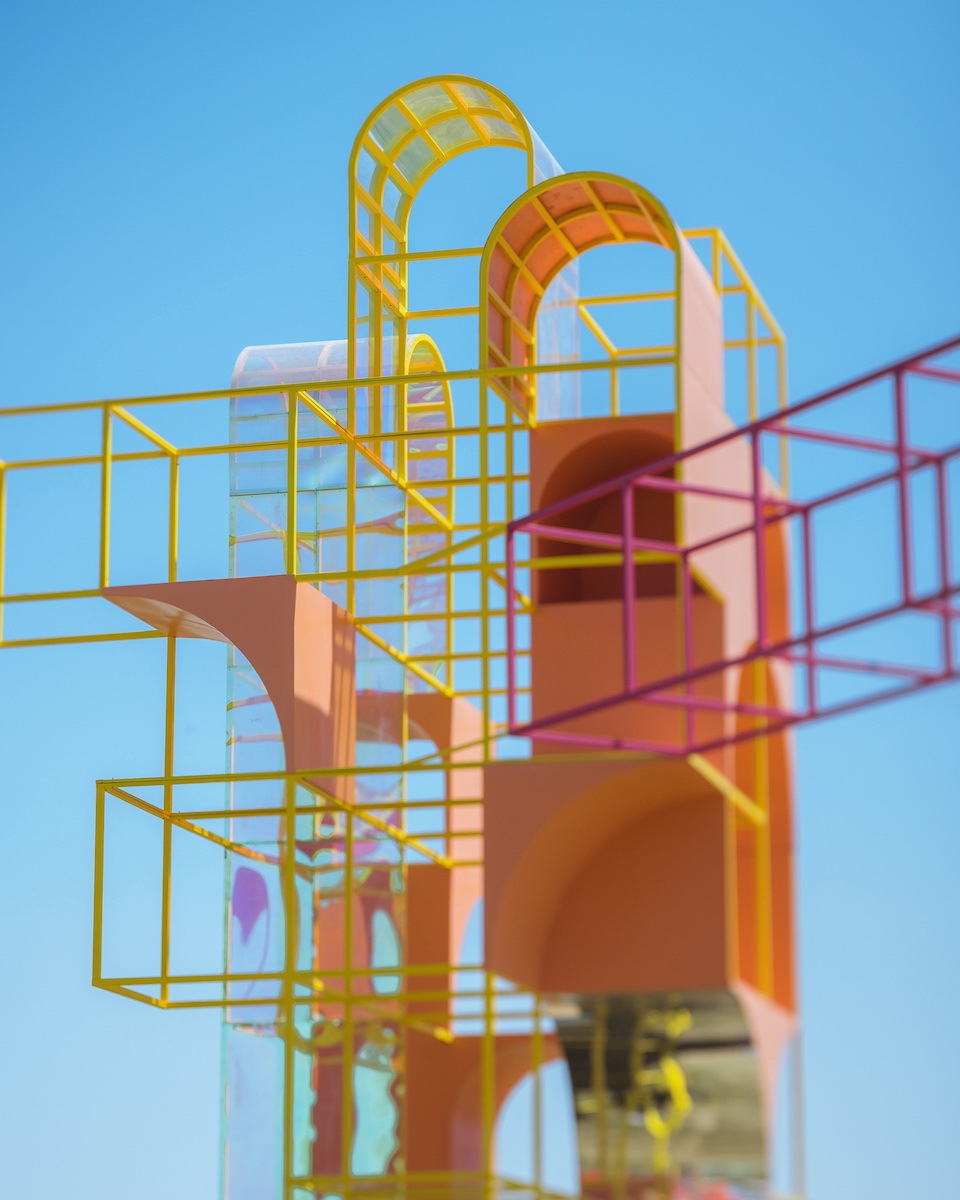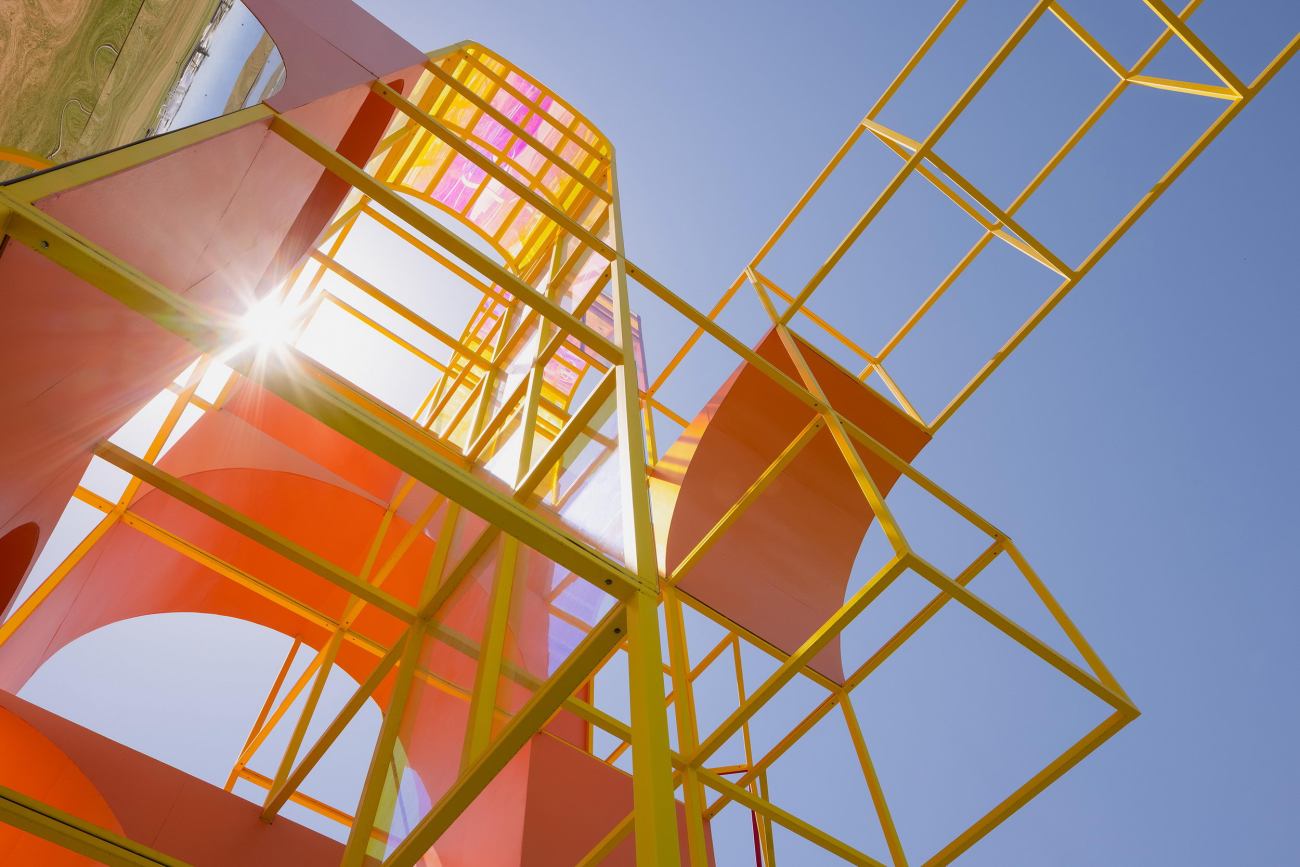| 公司: | Architensions | 类型: | 无 |
|---|---|---|---|
| 地区: | 美国 | 标签: | 艺术装置 | 公共空间 |
Architensions是由Alessandro Orsini和Nick Roseboro领导的设计和研究办公室,总部位于布鲁克林和罗马,为2022年科切拉音乐艺术节设计艺术装置作品,与Cristopher Cichocki,Kiki Van Eijk,Estudio Normal,Oana Stanescu和Los Dos等工作室共同合作,旨在提升音乐节观众的体验,这些装置将在2022年4月15-17日和4月22-24日的两个周末为帝国马球俱乐部注入新的色彩、光线和意义,以及独特的场所感和探索感。
Architensions, a design and research office led by Alessandro Orsini and Nick Roseboro and headquartered between Brooklyn and Rome, has been selected to design an installation for The Coachella Valley Music and Arts Festival 2022, alongside Cristopher Cichocki, Kiki Van Eijk, Estudio Normal, Oana Stanescu, and Los Dos. Augmenting the festival-goers’ experience, the installations will infuse new color, light and meaning, and a unique sense of place and discovery into the Empire Polo Club over two weekends from April 15-17 and April 22-24, 2022.
Architensions的装置名为“游乐场”(The Playground),由四座钢架塔楼组成,高度从42英尺到56英尺不等,如同模块化的脚手架一样,拥有各种形式和材料的形状。装置采用洋红色和黄色作为垂直网架,广场采用青色,色彩选用来自用于覆层的分色膜的光谱色,而其他颜色则从三原色的邻近色中,从而构成了明亮的色彩体验。“游乐场”的设计灵感来自康斯坦特(Constant Nieuwenhuys)的《新巴比伦》(New Babylon),描绘了一座即兴创作,充满机遇和游戏性的城市。装置的造型指代城市的休闲元素,如广场,剧院,公园和拱廊,它们垂直排列在多孔网格中,使各异的造型有了顺序。该设计令人想起熟悉的城市景观,其中游戏的概念则回到了自由支配的个人时间的原始定义,即游乐场。与Cedric Price的作品《欢乐宫》(Fun Palace)类似,这些网架创造了新的公共空间,一个反对技术主导体验带来的的孤立和同质性的开放空间。
Architensions’ installation, titled The Playground, consists of four steel-framed towers ranging in height from 42’ to 56’, like modular scaffolds holding shapes of various forms and materiality. The Playground uses magenta and yellow for the vertical grid, and cyan for the piazza, colors derived from spectrum of the dichroic film used for the cladding of some of the shapes, while others are painted in solid colors chosen from the associated adjacencies of the three colors, resulting in an intentionally vibrant color experience. The Playground takes its inspiration from Constant Nieuwenhuys’s New Babylon, a city of improvisation, chances, and play as a critical alternative to the burdens imposed by production. The shapes themselves refer to urban typologies for leisure such as piazzas, theaters, parks, and arcades, albeit vertically arranged within a porous grid that gives an order to the landscape of different shapes. The design evokes a familiar urban landscape, where the significance of play is reverted to its original definition of free personal time, in other words, a playground. Similar to Cedric Price’s Fun Palace, the grids create a new common ground, an open space that opposes the isolation and homogeneity of technologically mediated experiences.
▽用于覆层的分色膜的光谱色
▽广场采用青色
Orsini称:“游乐场装置与阿尔多·罗西(Aldo Rossi)的《Il Teatro del Mondo》类似,创造了一个类似于剧院的环境,人们可以在其中进行某种表演。它提供了无需技术就能体验休闲空间的机会,只需通过与空间实体互动即可。使用者既是观众,也是表演者。”
Says Orsini, “The Playground, in an analogy with Aldo Rossi ‘Il teatro del Mondo,’ creates an environment similar to a theater, in which people can interact in a sort of performance. It provides an opportunity to experience a leisure space without the use of technology, simply by interacting with the space and its materiality. The user is at the same time a spectator and performer.”
▽反光材料
虽然塔楼是静态的,无法居住,但其明亮的颜色和形状足以吸引音乐节观众在视觉上与它们互动。材料与太阳发生反应——分色膜在地面和人身上投射色彩,镜面膜则放大了视角并反射周围环境。塔楼的高度,位置和网架在它们之间的地面上投射动态阴影,形成一个人为制造的宇宙,天桥位于间隙空间,地面上的长凳连接塔楼,形成了“广场”区域,并提供了休息或观看表演的场所。While the towers are static and cannot be inhabited, the colors and shapes invite festival-goers to interact with them visually. The materials react with the sun—the dichroic film projects colors on the ground and the people, while the mirror film amplifies the perspectives and reflects the surroundings. The height, positioning, and grid of the towers allow for dynamic shadows to be cast on the ground amongst them, in totality comprising a manufactured universe of shapes that symbolize many physical places at once. Sky bridges define the interstitial space, and benches at ground level connect the towers and form the footprint of the “piazza,” as well as provide a place to rest or to be a spectator.
▽网架细节
 | 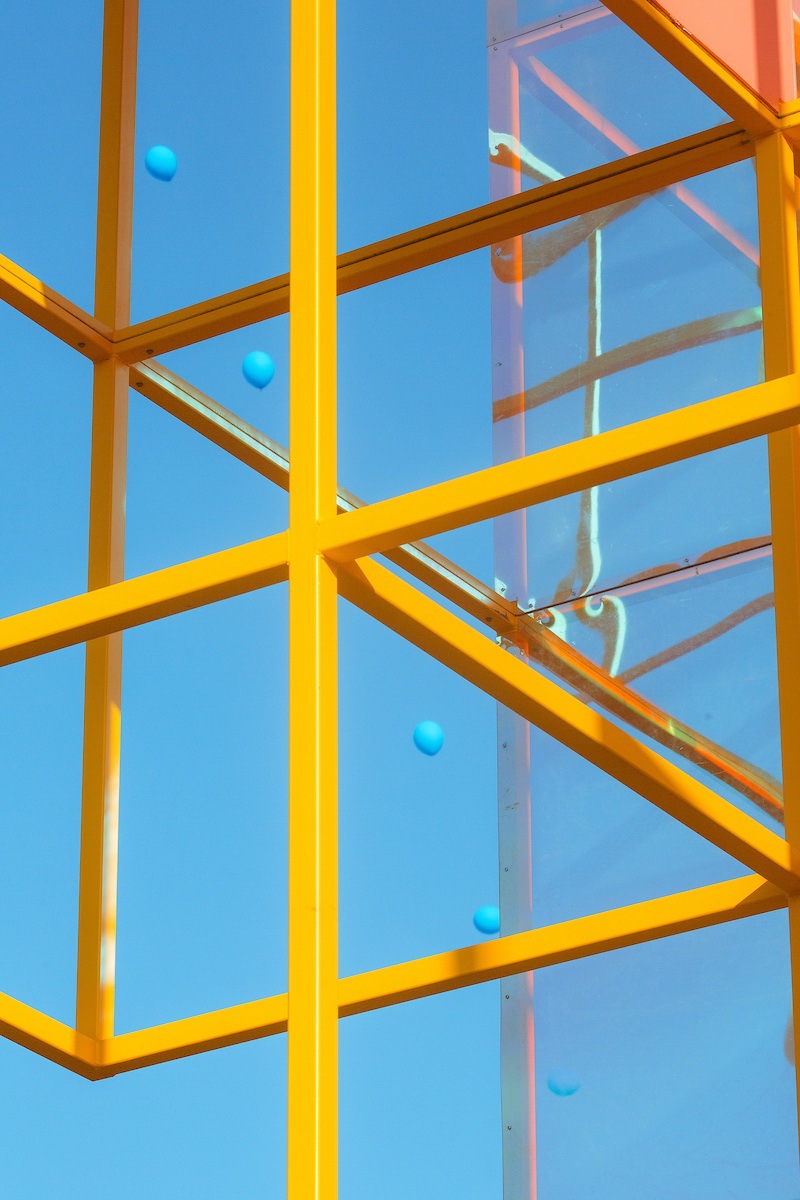 |
实际上,游乐场装置为观众提供了一个可以重新调整状态的空间,并以一种本质上不依附于商业或数字技术的方式重回休闲时光。在技术通过媒介图像取代现实生活体验的时代,该项目呈现出一种兼具动态与静态的实际性氛围,人们可以将其用作在现实世界中相互交流的空间。该装置还提出了垂直城市的理念,在这里,几十年的水平扩张已经定义了某种类型的休闲和郊区发展,它们相互分离,而非尝试改善环境的,以促进现实互动和集体性。与城市奢华的当代功能形成鲜明对比的是,装置将塔楼作为一个娱乐场所,以及促进协作和行动自由的框架。“游乐场装置是城市的碎片,”Roseboro说,“一个让音乐节观众参与集体互动以及表演,放松和游戏的节点。
At heart, The Playground provides its audience a space to re-align the spirit, and to re-discover leisure in a way that is not inherently attached to commerce or digital interpolation. In an age when technology substitutes for real-life experiences through mediated images, the project presents a physical atmosphere that is both dynamic and enveloping, that people can use as a space to interact with one another in the real world. It also proposes a vertical city in a place where decades of horizontal sprawl have defined a certain type of leisure and suburban growth defined by apartness, instead experimenting with the possibilities of improving our environment to foster physical interaction and collectivity. In contrast to the contemporary function of the tower as an urban luxury paradigm, The Playground proposes the tower instead as a site of fun, and a framework for promoting collaboration and freedom of movement. “The Playground is a fragment of a city,” says Roseboro, “a node for engaging festival-goers in collective interactions and in performance, relaxation, and play.”
The Playground Project Information
Materials: steel frame, wood, dichroic film, mirror film, polycarbonate sheets
Team: Alessandro Orsini, Nick Roseboro, Anna Laura Pinto, Gerald Rubia, Jihye
Son Dimensions: 189’ x 112’ (57.6 m x 34.1 m), tower heights ranging from 42’
to 56’ (12.8 m to 17 m)
Area: 21,168 sf / 1,966 m2
Project Year: 2020-2022
Location: Indio, California, USA
Client: Goldenvoice
©2022 Architensions
更新日期:2022-04-24 14:59:01
非常感谢 Architensions 带来的精彩项目, 查阅更多Appreciations towards Architensions for sharing wonderful work on hhlloo. Click to see more works!
